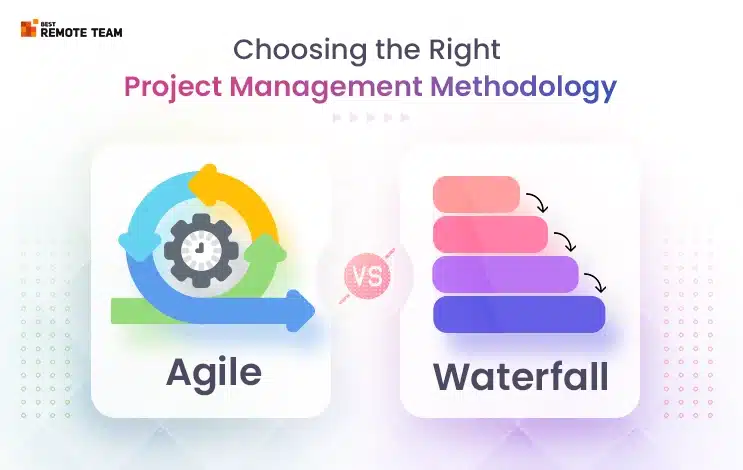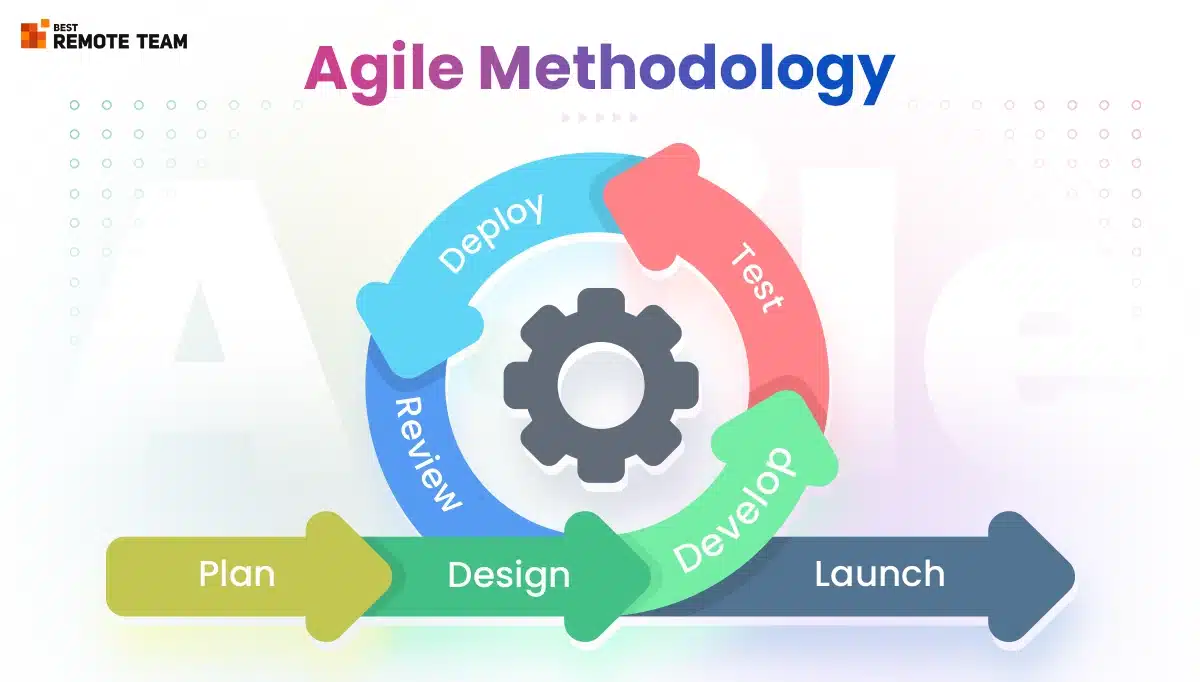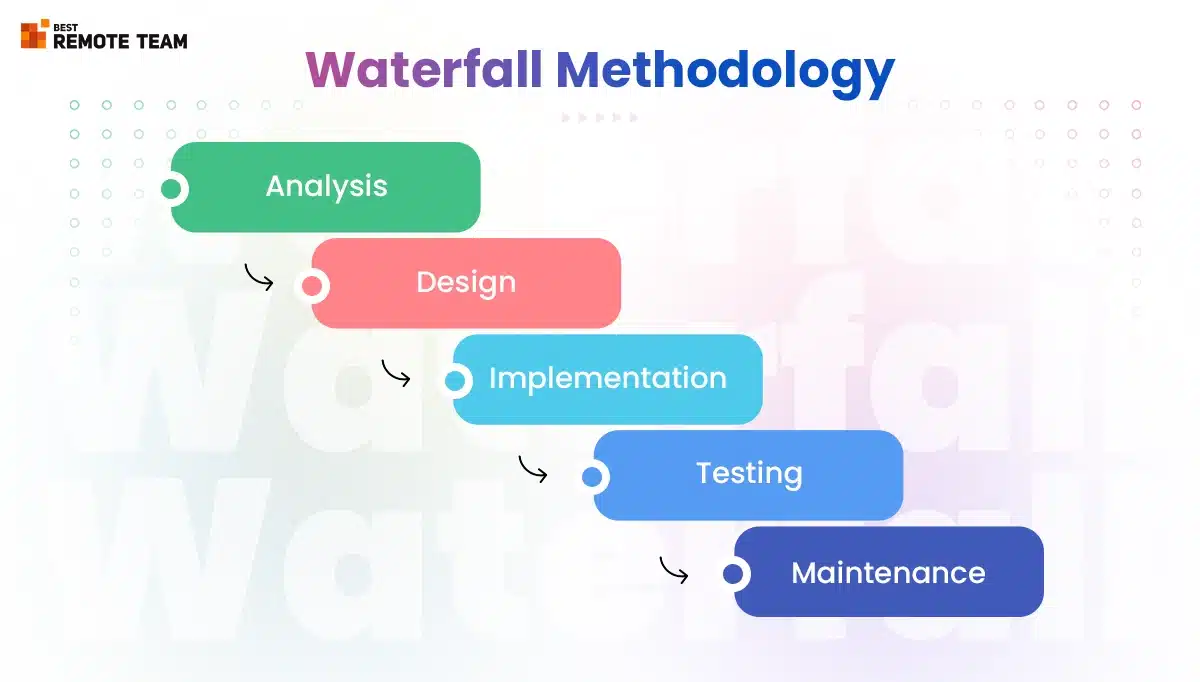What is Agile Methodology?
Agile is the new generation project management methodology to make the software development process easy. It is best because it breaks the projects into smaller parts, and developers continuously refine the software part by taking the stakeholder’s feedback until the final product does not look like as expected.
Key Features of Agile Methodology:
#1. Regular, Fixed-Length Iterations
Agile works like slowly steadily winning the race. It has fixed-length periods called iterations that are mainly 1-4 weeks. During each iteration, the team organizes tasks based on priority and works on features, bug fixes, and enhancements.
#2. Focus on Functional and Tested Features
Here every part is tested for its quality and functionality. This helps get customer feedback early, making sure the project meets user needs as it develops.
#3. Prioritizing and Maximizing Business Value
Agile teams focus on delivering the most valuable features first. They plan, track, and deliver the project in a way that ensures useful, tested features are completed early.
#4. Compact, Cross-Functional Teams
Agile teams are small, usually 5-10 people, to maintain high productivity and good communication. Each team includes members with diverse skills needed for the project.
Pros of Agile Methodology
#1. Flexibility and Adaptability
Agile is great for projects where requirements might change frequently and need adjustments on a regular basis.
#2. Faster Time to Market
Instead of waiting for the entire product to be finished, users get to experience useful features faster. If speed matters more than perfection, Agile is a good fit.
#3. Customer Satisfaction
No chance of dissatisfaction. Because the client is involved in every phase and review so final product 100% looks like how the client expected.
#4. Better Control
As you have regular meetings and progress checks, it becomes easier to identify issues early. Hence you can fix problems at the starting phase.
Cons of Agile Methodology
#1. Difficult to Scale
Agile works best for small teams and projects. Scaling it to larger projects with many teams can be challenging, as it requires careful coordination.
#2. Needs Continuous Stakeholder Involvement
Agile requires frequent feedback and input from clients or stakeholders. If they aren’t available regularly, the project can lose direction. So this method only works best if everyone in the team is available.
#3. Unpredictable Budget
Because Agile is flexible and open to changes, it can be hard to estimate the final cost. Changes and new features can increase the budget unexpectedly.
#4. Risk of Scope Creep
Your project might get late delivered because of its open nature. Because if you add more features, it might extend the deadline.
What is Waterfall Methodology?
The waterfall is a sequential project management method means it only works in one sequence or direction. You can’t go back once the particular part of the project is developed.
Hence if you want to get the most out of this waterfall model, only use it if you have clear requirements for each phase.
Key Features of the Waterfall Methodology
#1. Sequential Approach
It’s like building a house; you can’t start painting the walls before the foundation and structure are complete. The waterfall model is a step-by-step process where each phase must be completed before starting the next one.
#2. Document-Driven
Every step of the project depends on the documentation you need to complete detailed plans, requirements, and designs. It’s like having a detailed map for a road trip, minimizing chances of getting lost.
#3. Quality Control
Each phase in Waterfall includes thorough testing and quality checks before moving forward. This reduces the risk of major issues later in the project.
#4. Rigorous Planning
As everything is pre-planned, it gives you a clear idea about costs and deadlines.
Pros of Waterfall Methodology
#1. Simple and Easy-to-Understand Structure
The waterfall method is step-by-step and easy to understand. If you prefer a clear, organized plan where everyone knows what to do next, Waterfall is like a well-written recipe.
#2. Clear Project Documentation and Requirements
Development, design, testing, launching- everything is planned here. Like what will be done and how it will be done.
#3. Well-Suited for Fixed Requirements
If your project has well-defined requirements that won’t change, Waterfall is a great fit. For example: government contracts or construction, where changes are rare.
#4. Easy Project Management
With Waterfall, it’s easier to track progress because of its structured phases. You know exactly which stage the project is in.
Cons of Waterfall Methodology
#1. Inflexibility with Changing Requirements
Once the project starts, there is no going back. If new ideas or requirements arise, adapting is tough.
#2. Late Testing Phase
Testing happens at the end of the project, which means errors are discovered late.
#3. Limited Customer Feedback During Development
Customers don’t see the product until it’s almost complete, which reduces their input during the project. If users need changes, it may be too late.
#4. Higher Project Risk and Less Adaptability
Market shifts are common these days. If something good comes up in the market, it is tough to include in the ongoing project.
How Agile and Waterfall Models are Different?
Read the table below to get a clear idea of how both of these models are different. This will help to bring clarity to your mind.
| Factors | Agile | Waterfall |
| Project Structure | Iterative and repeated changes based on client feedback | Linear and step-by-step approach. |
| Flexibility and Adaptability | highly -flexible to change any component of the software | It is rigid. Less or not flexible at all |
| Documentation | Minimal documentation. It is updated at every iteration | Detailed research and documentation is done for every step |
| Client Involvement | Continuous client involvement at each phase | Limited or no involvement |
| Delivery and Speed | Incremental releases throughout the project. | The final product is delivered at the end. |
| Team size suitability | Best suited for small, and cross-functional teams. | Works well for larger teams with pre-defined roles. |
| Risk management | Risks can be managed at the early phase due to its iterative approach. | Risks are identified after the development is complete |
| Budget Control | The budget can fluctuate due to its incremental nature. | You can easily estimate the cost upfront |
When to Use Waterfall?
So by reading the above section,l you might have got the majority of idea how these both models work. Now we will discuss when to use waterfall and agile as per project needs.
Use waterfall:
- If you have a fixed timeline and fixed project requirements that is not expected to change in the future.
- If your client is busy and needs minimal involvement.
- If your client has a fixed budget.
- If the project needs detailed research and documentation.
- When you need a long-term commitment from all team members.
When to Use Agile?
Use agile:
- If you are working on a new project that is innovative and has dynamic changing needs.
- If budget is not a problem for you.
- If you want quality, flexibility, and scalability change the project as per needs.
- If user experience and fast delivery are your priority.
- If you are working with collaborative and cross-functional teams.
How to Choose the Right Methodology for Your Business?
If we look around ourselves, everything is upgrading day by day and bringing better versions. Currently software market mostly prefers the agile method because of changing user needs.
One reason is technological advancement. The app we use on a daily basis, also asks for updates on time-to-time. And is necessary to provide the best user experience and meet security concerns.
For example:
We all are using Netflix. Isn’t it? The famous OTT Netflix follows an agile approach to stay on top of other competitors. Their team researches and gathers useful data to make useful updates to the platform.
They release frequent feature additions and updates to deliver the best service to their users.
But just because it’s flexible, agile is not one size that fits all. The business that has limited budgets might not be able to choose an agile methodology. In such cases, the hybrid model is best.
Why Hybrid Model Give Better Outcomes?
In this model, the team can follow Waterfall’s structured planning with Agile’s flexibility to follow clear guidelines while still accommodating changes. By blending both methods, businesses can balance predictability with adaptability, and stay within budgets.
People also read: In-House vs Remote Developers: Which Model Works for Your Startup?
Top 6 Features of Hybrid Methodology
The hybrid method has proven beneficial to many businesses because it allows for a balance of the characteristics of agile as well as waterfall. Below are its features:
#1. Blending Sequential and Iterative Phases
Hybrid combines the structured, step-by-step approach of Waterfall with Agile’s flexible, iterative cycles. This allows teams to follow a clear plan while adapting to changes as the project progresses.
#2. Flexibility to Adapt to Changes
Hybrid offers flexibility to modify requirements or approaches during the project, just like Agile, ensuring the project can evolve based on feedback or changing circumstances.
#3. Continuous Delivery with Milestones
The hybrid model delivers working parts of the project continuously while marking key milestones, ensuring progress is made and stakeholders stay engaged throughout.
#4. Efficient Risk Management
Teams can do risk assessment and management, combining Waterfall’s upfront planning with Agile’s ability to address risks quickly during development.
#5. Focus on Quality Assurance Throughout the Project
Quality checks are done in both the sequential and iterative phases. Hence the product meets standards at every stage of development.
#6. Better Suitability for Modern, Diverse Teams
Teams can work with collaboration and work on different skills and working preferences. Like the team member who is good in technical research and documentation can do documentation stuff, the one who is good at testing does testing, etc.
Conclusion
So, now you have read it all, you might be able to decide the fair option from agile methodology vs waterfall methodology. The project management method you choose impacts your business in every way from day one. Consider the above factors and weigh down the pros and cons to make the best choice.
Also, a pro tip, if you don’t have time to stay involved continuously throughout the project, hire remote software developers on whom you can rely for the best result.






